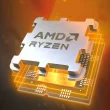The Nvidia GeForce RTX 5090, the anticipated next-generation flagship GPU, is poised to set new standards in gaming and computational performance. Based on the new Blackwell architecture, the RTX 5090 is expected to significantly outperform its predecessor, the RTX 4090, offering substantial enhancements in memory, processing power, and overall efficiency.
Architecture and Performance
The RTX 5090 will likely be built on Nvidia’s Blackwell architecture. This new architecture is likely to incorporate several advancements that improve ray tracing capabilities, AI performance, and overall computational power. The RTX 5090 is expected to feature 192 streaming multiprocessors, a notable increase from the 128 SMs in the RTX 4090. It will likely have enhanced ray tracing cores and tensor cores, improving both gaming graphics and AI computations significantly. Another rumoured feature of the RTX 5090 will be its memory configuration. It is rumored to be equipped with 16 GDDR7 memory modules, offering up to 28 Gbps speed per module. This expanded bandwidth is critical for handling higher resolutions and more complex textures in gaming and professional applications
Release Date and Market Position
While Nvidia has not officially announced the release date for the RTX 5090, it is speculated to launch in late 2024 or early 2025. This timing aligns with Nvidia’s typical 18 to 24-month release cycle for their flagship GPUs. There is also some speculation that the RTX 5090 could be released alongside or shortly after the RTX 5080, depending on market conditions and competitive pressures from AMD’s upcoming RDNA 4 architecture. Pricing for the RTX 5090 has yet to be confirmed, but it is expected to be in the range of its predecessor, the RTX 4090, which launched at $1,599. Given the technological advancements and increased production costs, there is potential for a slight price increase. However, this will also depend on market demand and competition from other GPU manufacturers








